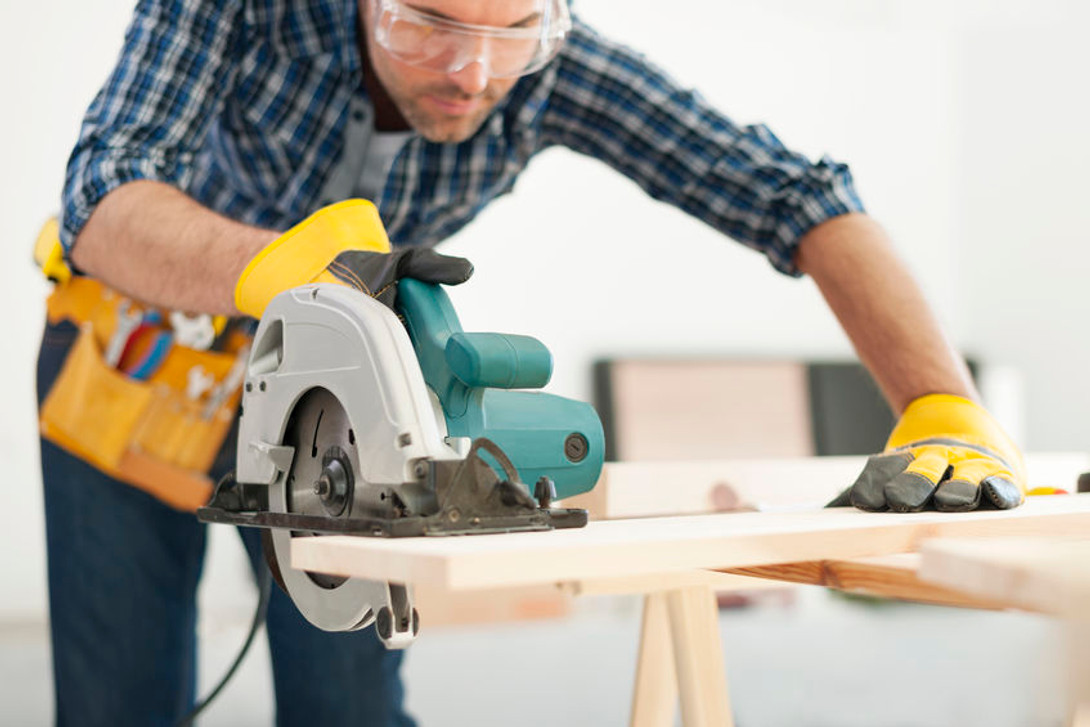Woodworking is one of the most fulfilling hobbies you can engage in. However, it does have the potential to be hazardous considering the tools you work with and the environment you work in. Below are seven practical safety tips that can help you create a safe environment and practice safe methods when using power tools.
1. Wear Safety Equipment
Safety equipment keeps you from sustaining injuries while working with wood. Some of the main types of safety equipment you should wear include:
●Ear protection for loud noises
●Latex gloves for applying finishes
●Safety glasses for avoiding flying objects
2. Do Not Wear Loose Clothing
Loose clothing can cause both injuries and damage to your equipment. Therefore, you should refrain from wearing loose, baggy shirts or pants. Also, take off all jewelry before working with the wood. Necklaces, watches, and bracelets can find their way into drills and saw blades. If a piece of jewelry falls into a spinning saw, it can project flying debris toward your face or torso. The jewelry can also get lodged into the blade and cause damage to the saw.
3. Stay Sober
This should go without saying. If you work with hand tools or electric equipment, you should do so while you are fully coherent. Therefore, you should avoid working while under the influence of drugs or alcohol. You can cause severe injury to yourself or someone else.
4. Disconnect Electrical Equipment When Necessary
Although power equipment has features, such as guards and safety modes that keep you from turning the equipment on, you should never trust it. Therefore, if you need to handle the equipment without actually using it (i.e., changing a blade or fixing a tool), then unplug the tool from the wall. Unplugging the tool ensures it will not suddenly come on while you are working on it. It also ensures that you will not get electrocuted in case the tool comes into contact with water in any way. Last, always unplug the tools when you are not using them. It is never a good idea to keep a tool plugged in and lying around.
5. Do Not Bridge your Extension Cords
You’ve probably seen it before: multiple extension cords connected to power strips, which are plugged into more extension cords, which are plugged into a wall. Not only is this type of setup an inefficient use of power, but it is also dangerous and can lead to power failures. The best solution for this is to purchase a power strip with a built-in extension cord.
6. Make Sure Your Blades & Bits Are Sharp
Dull blades are dangerous and inefficient for several reasons:
●They create more friction between the blade and the wood. More friction may cause the wood to kick back or move around.
●More friction leads to a hotter blade, thus, hotter wood pieces.
●A dull blade also causes chips and debris to fly. A sharp blade creates a cleaner cut and less chipping.
7. Watch Your Hands
Cuts from blades and drills usually occur because a worker either overcorrects a mistake, overreacts to a perceived problem, or isn’t paying attention to how close their hand is to the tool. Therefore, you should always watch where your hands are. Never reach out toward the blade or bit. In addition, if you need to stabilize a piece of wood, find a method for doing this without placing your hand close to the tool.
Woodworking Tools From Viking Mountain
Viking Mountain offers woodworking, gardening, and other types of home improvement tools. We have a wide selection of tools that are perfect for your upcoming project. We invite you to explore our website to find the products you need for your home improvement job. Order straight from our online store and have your products delivered straight to your door.

